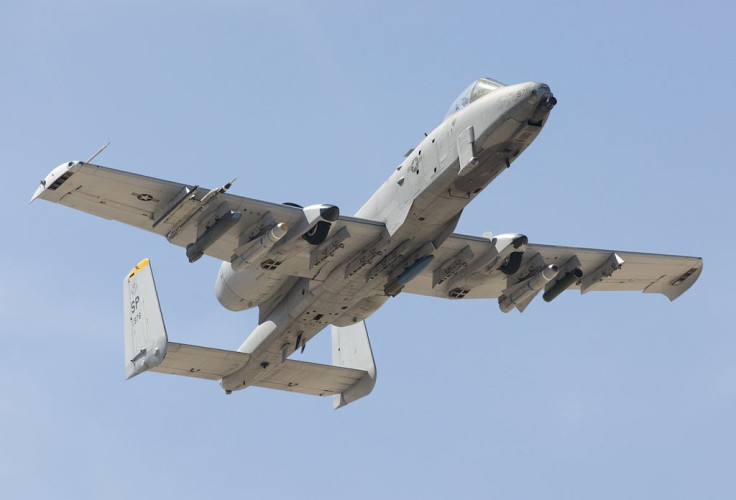US Sends A-10 Thunderbolt II Aircraft To Germany, Just As Ukraine Ceasefire Signed

As a new ceasefire for eastern Ukraine was signed on Thursday, in an attempt to halt the worsening conflict between the Ukrainian government and pro-Russian rebels, the United States is sending to Europe a warplane that was designed during the Cold War for one purpose: to destroy Russian tanks in Europe.
A dozen A-10 attack aircraft will move to Spangdahlem Airbase in Germany to support Operation Atlantic Resolve, a U.S.-led commitment to continued support of NATO partners as Russia expands its military presence on the doorstep of the alliance.
The airplanes, famed for their ability to find and destroy armored vehicles, will be also deployed to nations closer to Russia.
"While in Germany these aircraft will forward-deploy to locations in Eastern European NATO nations," Lt. Col. Christopher Karns, a spokesman for the Air Force at the Pentagon, told Military.com. "Units will conduct training alongside our NATO allies to strengthen interoperability and to demonstrate U.S. commitment to the security and stability of Europe."
The A-10 recently escaped being cut from the Pentagon's budget thanks to the support of powerful allies in Congress, including Sen. John McCain, R-Ariz., a leading advocate of a harder U.S. stance on Ukraine.
The dozen aircraft, supported by 300 staff in Germany, made the journey from Davis-Monthan Air Force Base in Arizona on Monday. The move comes at a crucial time for Europe, as Russian airplanes conduct flights close to NATO airspace reminiscent of the Cold War and fierce fighting between Russian-backed separatists and the Ukrainian army continues in eastern Ukraine.
Back in the United States, however, the future of the A-10 is being fiercely contested. The Air Force, which wants to end the A-10's 40-year run to free up resources for its new F-35 fighter jet and save the $4.2 billion a year the old planes cost to run, provided data showing that the A-10 was guilty of killing the most U.S. troops and civilians in friendly-fire incidents since 2001.
According to figures from the Air Force, the A-10 was involved in 10 friendly-fire deaths and 35 civilian deaths, around double the toll of the the next-worst aircraft.
The Project on Government Oversight, however, a nonpartisan government watchdog based in Washington, has debunked the data, claiming the USAF had “cherry-picked and then declassified” selected statistics to make the A-10 look bad.
According to POGO, the Air Force presented the total number of kills without saying how many missions each aircraft had been on. Factoring in that number, the A-10’s civilian death rate is far less per missions flown than five of seven other aircraft widely used in combat in Iraq and Afghanistan.
“No aircraft that conducts close air support missions -- which by definition involve the close proximity of friendly and enemy forces -- is immune from fratricide. But as our ground troops ... will tell you, the unique CAS capabilities of the A-10 have saved hundreds of American lives,” said Sen. Kelly Ayotte, R-N.H., a longtime supporter of the aircraft.
“Unfortunately, the Air Force is again making selective use of data to support its misguided, dangerous and premature divestment of the A-10," Ayotte said in a statement, "a divestment that ignores the advice of the overwhelming majority of Joint Terminal Attack Controllers who know close air support best.”
© Copyright IBTimes 2024. All rights reserved.






















